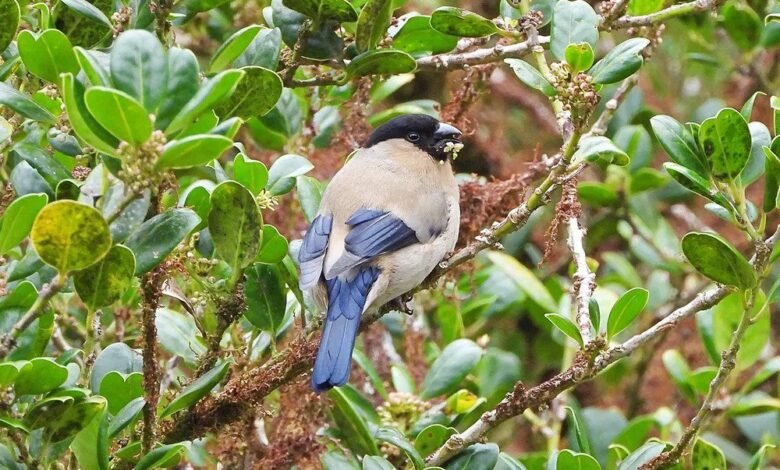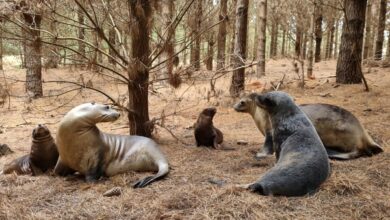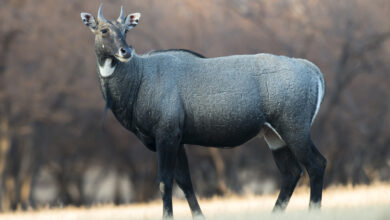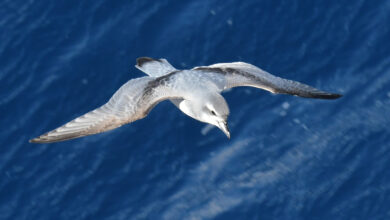
An Azores bullfinch feeds on the buds of a native tree on São Miguel Island in the Azores. Photo Credit: Anne Pinto-Rodrigues
Animals PortugalConservation Win That’s Good for Nature and Its Endemic Bird
São Miguel Island in the Azores, an autonomous region of Portugal in the Atlantic, is home to the elusive Azores bullfinch, and conservation efforts have been deployed for more than two decades to save the difficult-to-observe endangered bird.
“Conservation efforts needed to be focused on two fronts,” explains conservation biologist Jaime Ramos whose study published in 1995 on the diet and habitat preferences of the Azores bullfinch became crucial for conservation efforts. “First, removing exotics and creating conditions that promote the growth of the native plant species, and then planting them. And second, slowly trying to increase the size of the forest in certain areas.”
In the early 1990s, very little was known about the Azores bullfinch Pyrrhula murina, a passerine bird endemic to the island. A meager 100 breeding pairs of Azores bullfinch – a Royal Society for the Protection of Birds’ estimation – were restricted to a small patch of native forest around Pico de Vara, the highest point on São Miguel. In 2005, because the bird’s population was declining, it made the International Union for Conservation of Nature’s (IUCN) list as “critically endangered,” earning the distressing epithet of “Europe’s most endangered passerine bird.” Since then, conservation efforts have focused on habitat restoration – led by the Portuguese Society for the Study of Birds (SPEA) – mainly by planting native trees, helping the species make a promising recovery. In 2016, it went from “critically endangered” to “vulnerable” on IUCN’s list. Over the last 20 years, 1,000 acres of laurel forest have been restored in the specially protected Pico da Vara/Ribeira do Guilherme area, where more than 500,000 native trees have been planted. In 2010, the bullfinch’s population was about 1,000 birds, and today, it is estimated at 1,300 individuals across some 5,000 acres of suitable habitat. “The population trend has been stable for the last eight years,” states Azucena de la Cruz, a conservation biologist who co-leads all of SPEA’s Azores programs.



